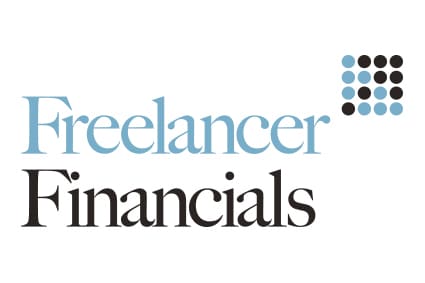Plan now for the fall in dividend allowance
Since 6th April 2016, the way dividends are taxed has changed. Prior to that date, dividends would only suffer tax if the individual was a higher rate taxpayer but that changed with the introduction of the dividend allowance.
The first £5,000 of dividend income is exempted by an allowance and taxed at 0%. In this respect the dividend allowance is more like a zero-rate band rather than an allowance, as it eats up a part of the tax band. The remaining dividends, assuming they are not covered by the personal allowance, are then taxed at 7.5% (basic rate), 32.5% (higher rate) and 38.1% (additional rate).
Many contractors adopt a remuneration strategy of low salary up to the N.I threshold or the personal allowance, and the remainder taken in dividends, because dividends do not attract NIC and therefore still remain tax efficient. However, the changes to dividend taxation has an impact on this simple but effective tax planning, particularly as the dividend allowance is set to fall from £5,000 to £2,000 from 6th April 2018.
Consider a shareholder in a family company who only takes a dividend of £5,000 each year and whose personal allowance is exhausted by other income. Come the 2018/19 tax year, that person will pay tax on £3,000 of those dividends whereas previously none was payable. The full impact will be dependant on the rate at which those dividends are taxed:
| Rate | Tax due |
|---|---|
| Basic | £225 |
| Higher | £975 |
| Additional | £1,143 |
Illustration – basic rate taxpayers
Mork and Mindy are shareholders in Ork Ltd. They receive a salary equivalent to their personal allowance and dividends of £30,000 each.
In 2017/18, only £25,000 of the dividend income is taxable at 7.5%, so Mork and Mindy each have a tax bill of £1,875.
In 2018/19 however, £28,000 of their dividends are liable to tax at 7.5% because of the reduction of the dividend allowance to £2,000, meaning that their tax bills will rise to £2,100 each, an increase of £225 (12%) on the previous tax year.
Illustration – higher rate taxpayer
Lola has a full-time job that pays a salary that uses up both her personal allowance and basic rate band. She also runs an IT company on a part-time basis and draws an annual dividend of £15,000.
In 2017/18, £10,000 would be taxed at 32.5%, giving rise to a liability of £3,250.
In 2018/19, the lowering of the dividend allowance, will mean that £13,000 will be taxed at 32.5%, meaning Nadia will have to pay over £4,225 to the tax man, an additional £975 (30%) from the previous year.
Plan now
Contractors have a month to put into place some straightforward planning before the dividend allowance is reduced to £2,000 from 6th April 2018.
Use it or lose it
Sounds simple enough, but you should try to ensure that you do not waste the current allowance of £5,000 as that represents £5,000 of tax-free income even when your personal allowance has been fully used up.
PSCs with more than one shareholder should try to ensure that all shareholders take advantage of the £5,000 allowance and may wish to consider paying further dividends before 5th April 2018 to use up any remainder allowance, assuming that the company has sufficient retained profits to do so.
Dividend acceleration
Again, where shareholders have not used up their dividend allowance in 2017/18, consider bringing forward any planned dividend before 6th April 2018 rather than on or after that date.
Illustration
Fred owns his own engineering company and draws a salary equivalent to his personal allowance. He plans his first dividend of £10,000 on 30th April 2018. If he goes ahead with this, then £8,000 will be exposed to tax in 2018/19 whereas if he accelerates the payment, only £5,000 will be taxed in 2017/18. Furthermore, the dividend allowance of £2,000 in 2018/19 will be preserved for subsequent dividends.
Simple planning techniques implemented now will save you some tax.






Make your partner / spouse a share holder of your company, if not already, so at least your household can benefit from a combine £4K divi allowance. Every little helps!
Doesn’t that mean you pay them half of all the dividends for the year if you put them on at the start of the year?
Well, yes – but you are doubling your tax free divi benefit.
Nothing beats salary sacrifice directly into a pension as the article say use it or lose it. Yes you pay income tax however 25% is tax free, then the other taken as income up to the personal allowance is also tax free, using savings built up over the years in ISA’s can provide the additional income tax free. Pensions are outside estate for IHT, allowing them to be passed on tax free.
While the possibility for Salary Sacrifice exists no tax avoidance scheme can better it, there is only one method to go one better the amount up to the personal allowance is tax free and up to the National Insurance limit is free from any National insurance, so up to that amount can be put into a Pension and reclaim tax relief having paid no tax or national insurance.
Once retired not earning, £2880 can still be put into a pension up to the age of 75, as outside the estate of IHT not only do you get £720 in tax relief, you can avoid paying £1152 IHT, plus while invested in a pension your not be paying CGT, Dividend Tax, plus the reduced estate may put you in a lower band for the death tax – probate.
Using pensions and Salary Sacrifice has always been the best way to expose the Tax Avoidance lies from HMRC, nothing beats it in tax savings meaning there is no actual possibility of Tax Avoidance until the pension allowance has been exhausted. Remember you can also go back and use up to 2 years of the residual pension allowance.
As the word say it’s a sacrifice a reduction in the take home pay, for longer term gains, the only way to get one over the HMRC is over time is taking a long term view.